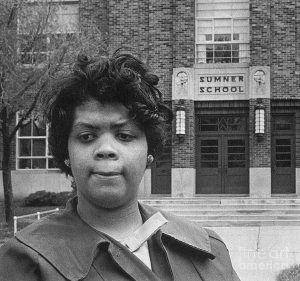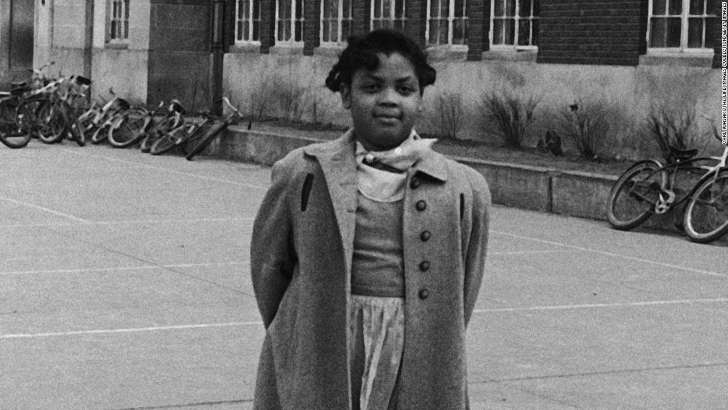Linda Brown, who as a little girl was at the center of the Brown v. Board of Education US Supreme Court case that ended segregation in schools, has died, a funeral home spokesman said.
Brown died Sunday afternoon in Topeka, Kansas, Peaceful Rest Funeral Chapel spokesman Tyson Williams said.
Brown was 9 years old when her father, Oliver Brown, tried to enroll her at Sumner Elementary School, then an all-white school in Topeka, Kansas.
When the school blocked her enrollment her father sued the Topeka Board of Education. Four similar cases were combined with Brown’s complaint and presented to the Supreme Court as Oliver L. Brown et al v. Board of Education of Topeka, Shawnee County, Kansas, et al.
The court’s landmark ruling in May 1954 — that “separate educational facilities are inherently unequal” — led to the desegregation of the US education system. Thurgood Marshall, the NAACP’s special counsel and lead counsel for the plaintiffs, argued the case before the Supreme Court.
Kansas Gov. Jeff Colyer acknowledged Brown’s contribution to American history.
“Sixty-four years ago a young girl from Topeka brought a case that ended segregation in public schools in America. Linda Brown’s life reminds us that sometimes the most unlikely people can have an incredible impact and that by serving our community we can truly change the world.”
 Brown was a student at Monroe Elementary School in 1953 and took a bus to school each day.
Brown was a student at Monroe Elementary School in 1953 and took a bus to school each day.
My father was like a lot of other black parents here in Topeka at that time. They were concerned not about the quality of education that their children were receiving, they were concerned about the amount — or distance, that the child had to go to receive an education,” Brown said in a 1985 interview for the documentary series “Eyes on the Prize: America’s Civil Rights Years.”
“He felt that it was wrong for black people to have to accept second-class citizenship, and that meant being segregated in their schools, when in fact, there were schools right in their neighborhoods that they could attend, and they had to go clear across town to attend an all-black school. And this is one of the reasons that he became involved in this suit, because he felt that it was wrong for his child to have to go so far a distance to receive a quality education.”
Monroe and Sumner elementary schools became National Historic Landmarks on May 4, 1987, according to the National Park Service. President George H.W. Bush signed the Brown v. Board of Education National Historic Site Act of 1992 on October 26, 1992, which established Monroe as a national park.

